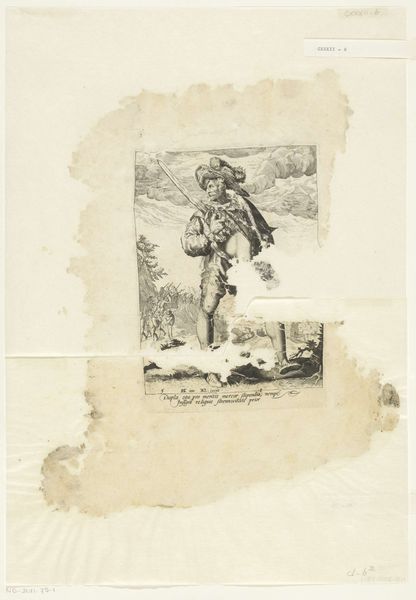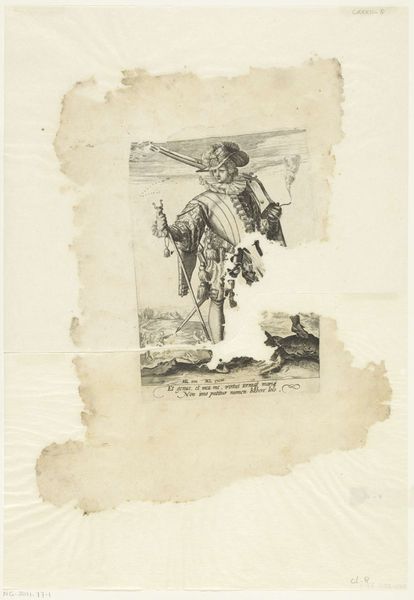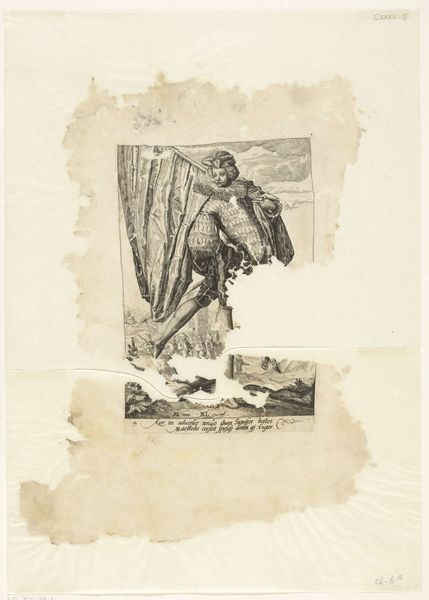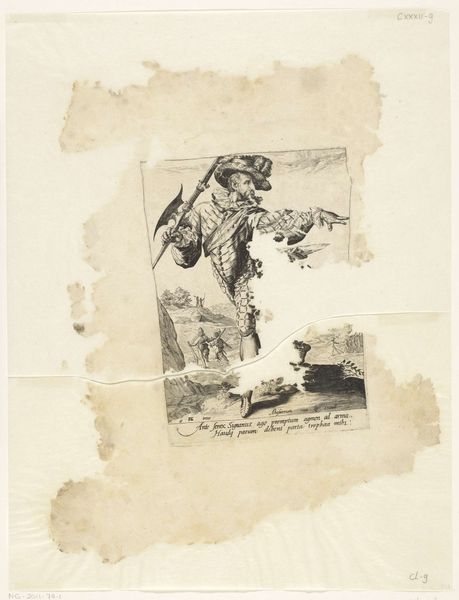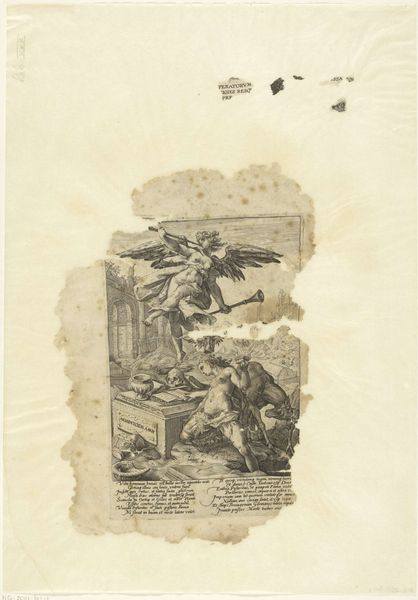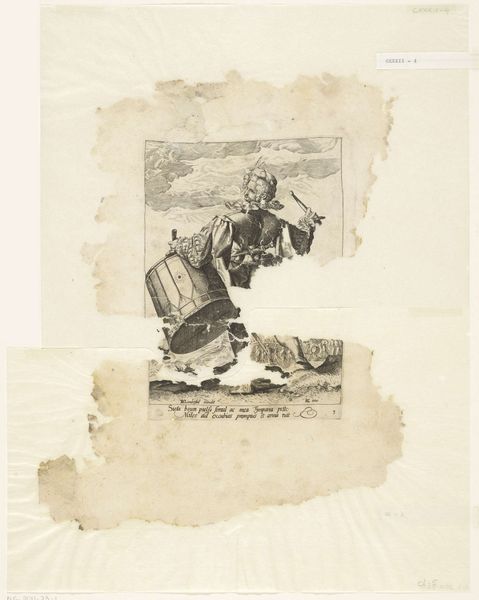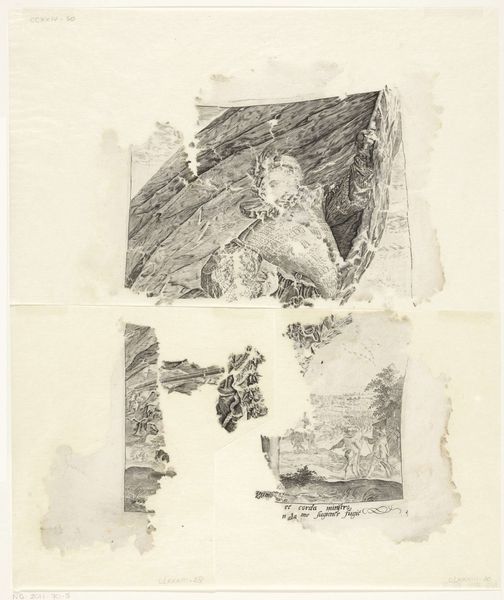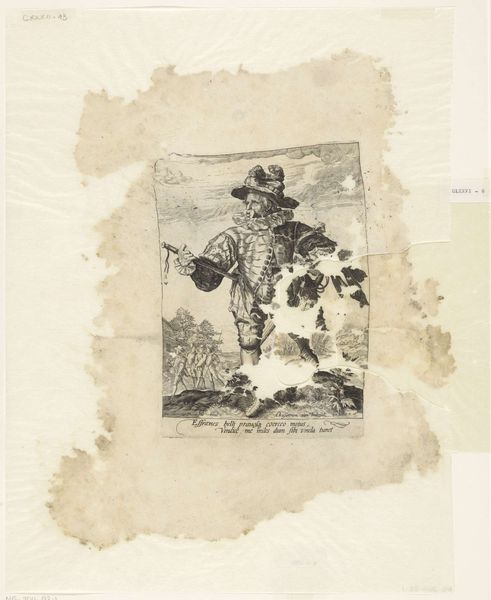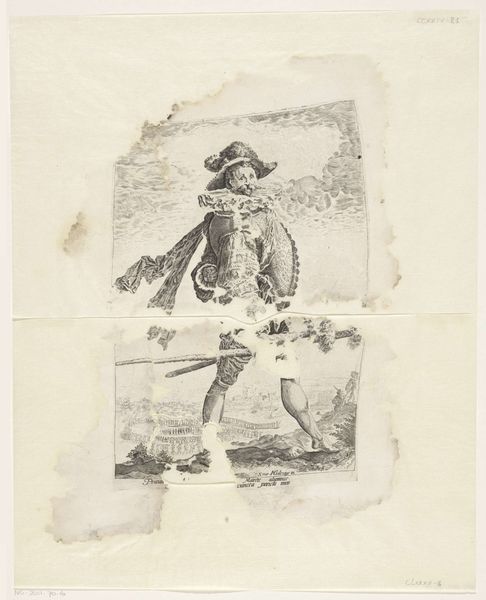
print, etching, engraving
#
portrait
# print
#
etching
#
mannerism
#
figuration
#
history-painting
#
engraving
#
mixed media
#
watercolor
Dimensions: height 394 mm, width 311 mm
Copyright: Rijks Museum: Open Domain
Editor: So this is "Soldier with Harquebus," from around 1587 to 1596. It's an etching and engraving, unsigned. What strikes me is the damage; it looks almost like the print itself has been through battle! How does the print's process and material speak to you? Curator: Precisely! The ravages of time etched onto this print serve as a material record. This wasn't merely created, it was *made*. Consider the labor: the engraver painstakingly transferring the image, the printer, the paper-maker. How many hands touched this object? The damage itself becomes part of its history of consumption. Editor: So the physical flaws are significant. Curator: Absolutely. Forget the idealized hero; the decay highlights its life as a commodity. Think of the copperplate: mined, processed, used, perhaps reworked countless times. It’s a raw material transformed by human hands and social forces. The paper too—what rags went into it? Where was it produced? What does that tell us about the circulation of goods at that time? Editor: So, more than a portrait, it’s a snapshot of a complex material world? Curator: Exactly! The “Soldier” is less about individual valor and more about the machinery of war, the global trade networks required to arm him. This "mixed media", as the tag indicates, transcends typical categories. The etching, engraving, and likely watercolor reveal artistic layering that reflects broader economic layering of that time. Does that reframe how you see the image? Editor: It definitely does! I was so focused on the soldier, I missed the story the materials were telling. Thanks for broadening my perspective! Curator: My pleasure!
Comments
No comments
Be the first to comment and join the conversation on the ultimate creative platform.
